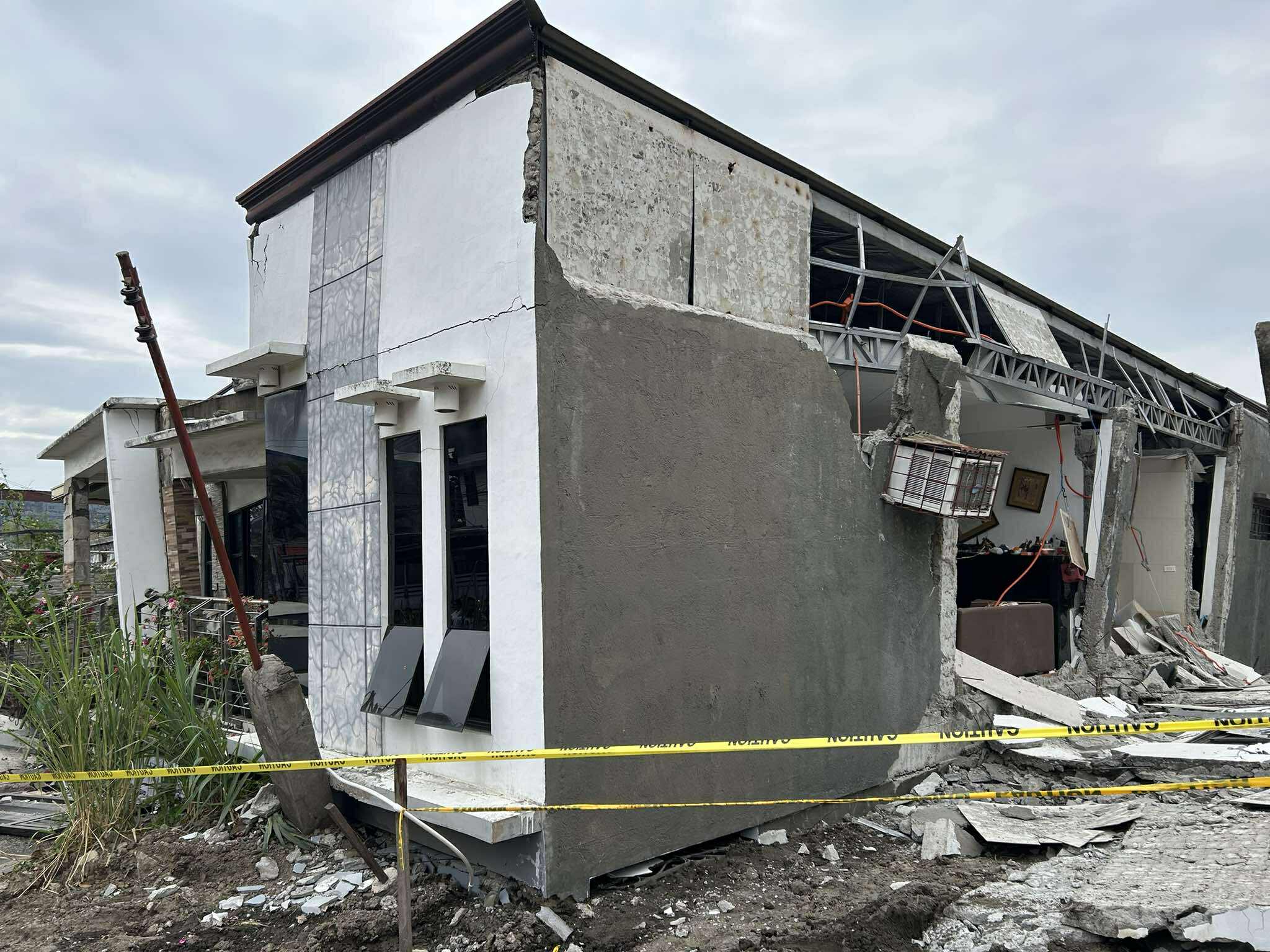DAVAO, Philippines — Two powerful earthquakes struck southern Mindanao on Friday, October 10, 2025, sending residents fleeing from homes, offices, and schools as buildings swayed, power was cut, and tsunami alerts rippled across the Davao region and neighboring provinces. The twin tremors, described by seismologists as a rare “doublet,” caused widespread panic and left at least seven people dead, dozens injured, and thousands displaced.
According to the Philippine Institute of Volcanology and Seismology (Phivolcs), the first quake, which measured magnitude 7.4, struck offshore near Manay, Davao Oriental, at 9:43 a.m. The tremor originated at a depth of about 23 kilometers beneath the sea. Just hours later, a second quake measuring between 6.7 and 6.8 magnitude followed in the same region, compounding the destruction and frightening residents who were still reeling from the earlier shock. Phivolcs Director Teresito Bacolcol explained that the two tremors were classified as a “doublet,” meaning both occurred along the same fault system but were separate seismic events.
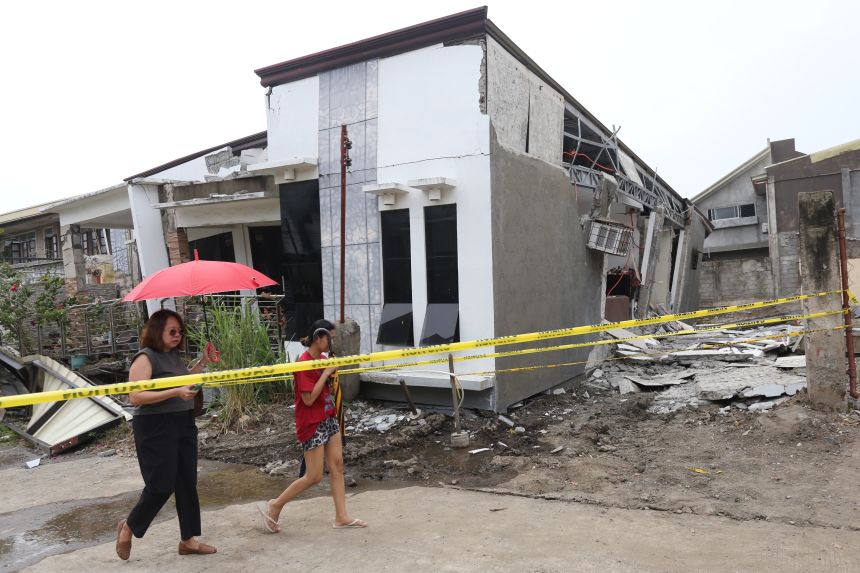
Initial casualty reports confirmed two fatalities in Mati City—one person killed by falling debris and another who suffered a heart attack during the quake. In Pantukan, Davao de Oro, three miners were trapped and killed when the tunnel they were working in collapsed. Another resident was reported dead in Lupon, Davao Oriental, after being struck by falling debris, while Davao City recorded one fatality from a wall collapse. Officials have said the number of deaths could rise as search and rescue operations continue in remote towns affected by landslides and power outages.
Across Davao Oriental, the shaking toppled homes, damaged buildings, and triggered landslides. Twenty-one houses were reported to have collapsed entirely, while dozens more suffered severe cracks. The Manay District Hospital was evacuated after engineers found structural damage in its foundations, forcing more than 200 patients to be relocated. Entire portions of the province lost power as lines went down, plunging communities into darkness. In nearby Davao City, hundreds of people fainted or were treated for panic attacks as intense aftershocks rattled the city throughout the day. Schools and government offices suspended work while structural inspections were carried out.
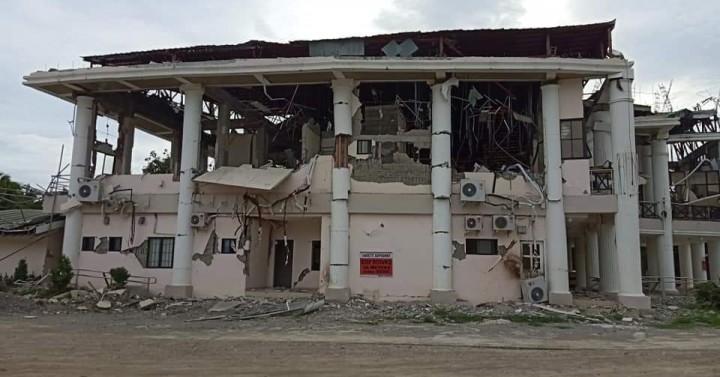
The impact of the quakes rippled far beyond Davao Oriental. The tremors were felt across Soccsksargen, Caraga, and even parts of Cebu and the Visayas, where intensity 4 shaking was reported. In Cebu City, officials ordered the suspension of classes and work as a precaution. The National Disaster Risk Reduction and Management Council (NDRRMC) later reported that over 100,000 residents across Mindanao were affected, with more than 11,000 people temporarily staying in evacuation centers. Damage assessments revealed that over 12,000 schools across the region were affected, with at least 1,400 classrooms damaged and hundreds destroyed.
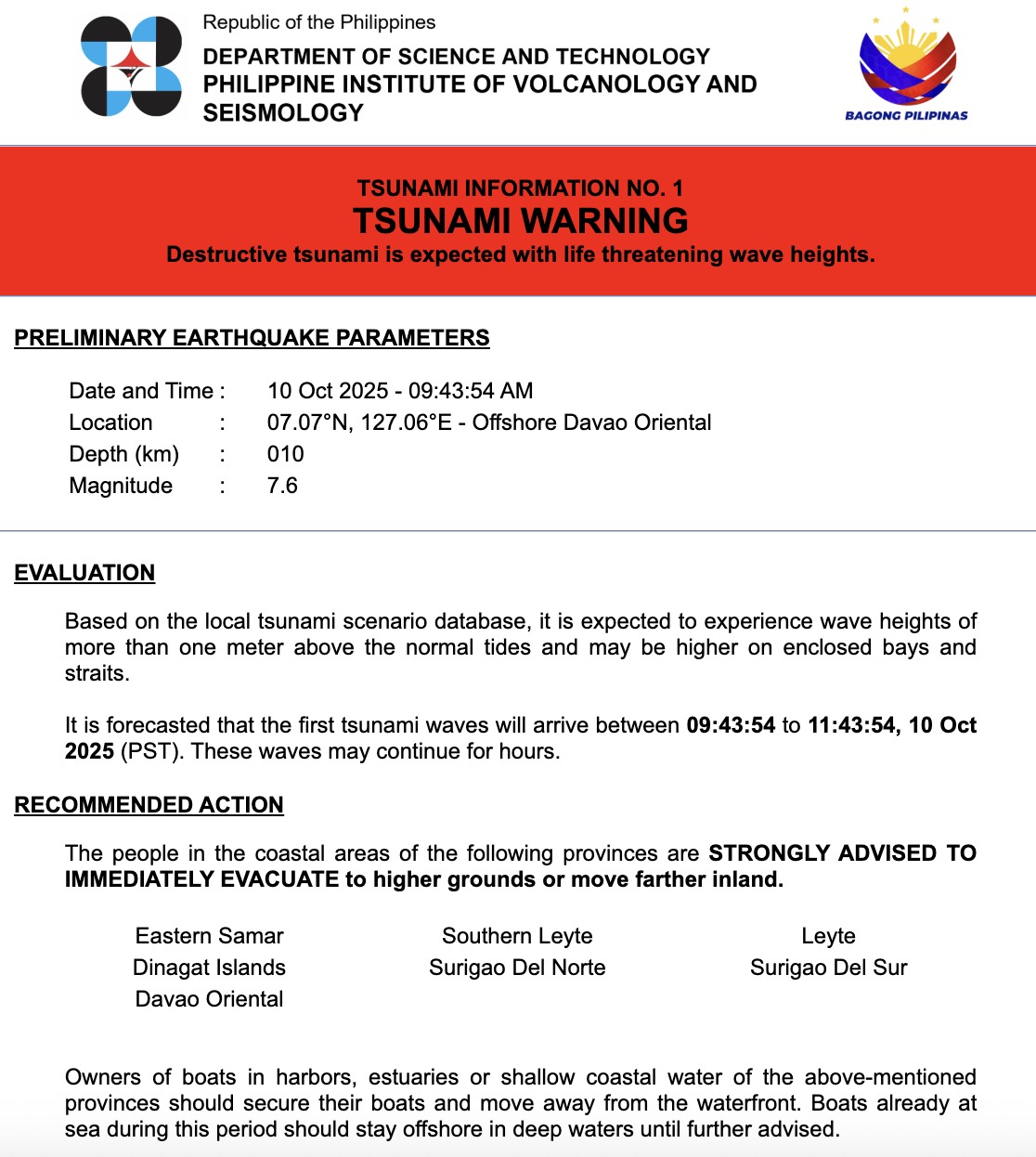
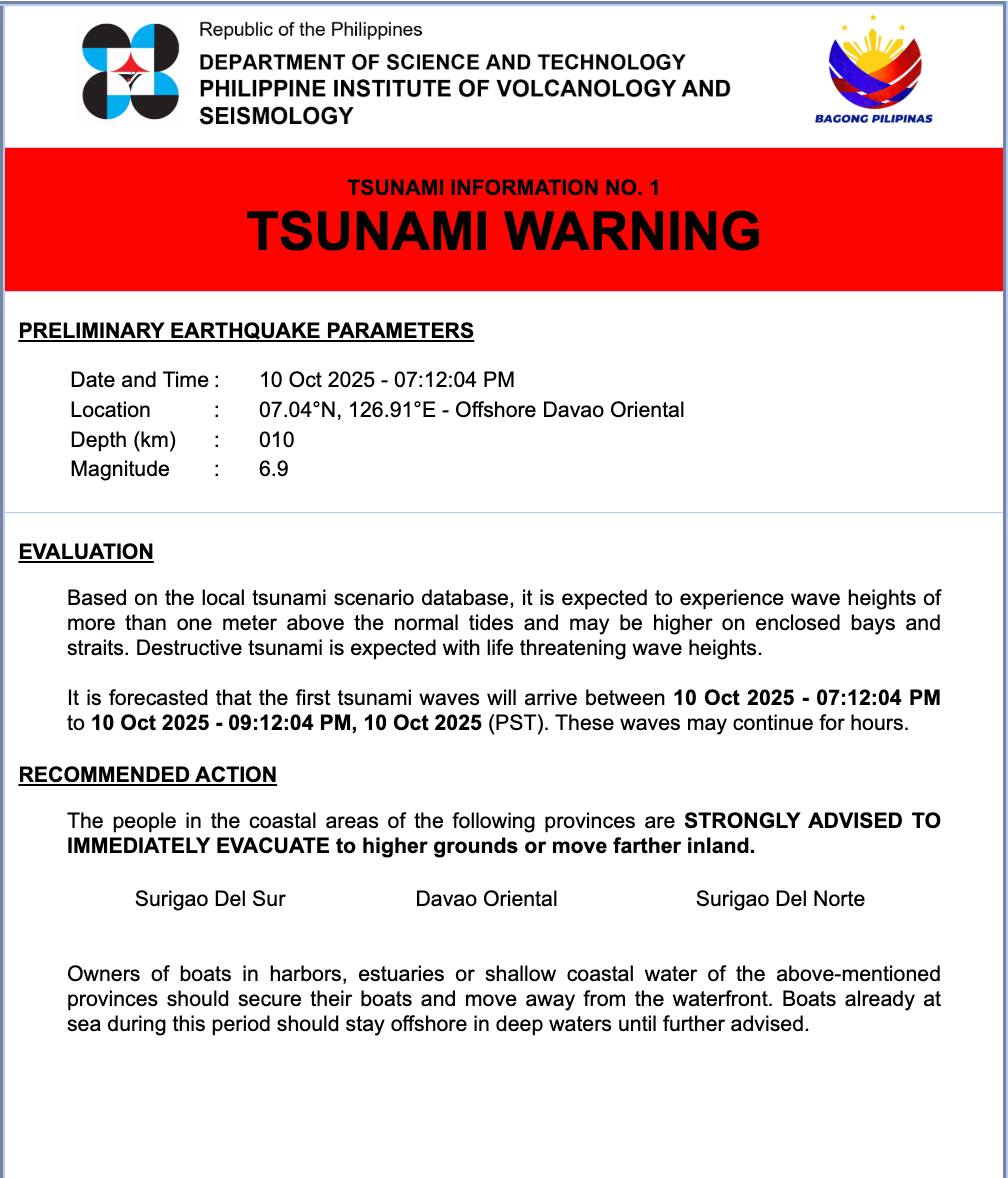
Authorities immediately issued a tsunami warning following the first quake, prompting evacuations in coastal barangays across Davao Oriental, Surigao del Sur, and neighboring islands. The Pacific Tsunami Warning Center initially predicted waves between one and three meters high, but the alert was lifted a few hours later after no significant sea-level rise was recorded. Nonetheless, small fluctuations were observed in parts of Mindanao and Indonesia. As of Saturday morning, Phivolcs had recorded more than 569 aftershocks—some strong enough to be felt by residents. By the day’s end, that number climbed to more than 800, underscoring the volatile seismic activity in the area.
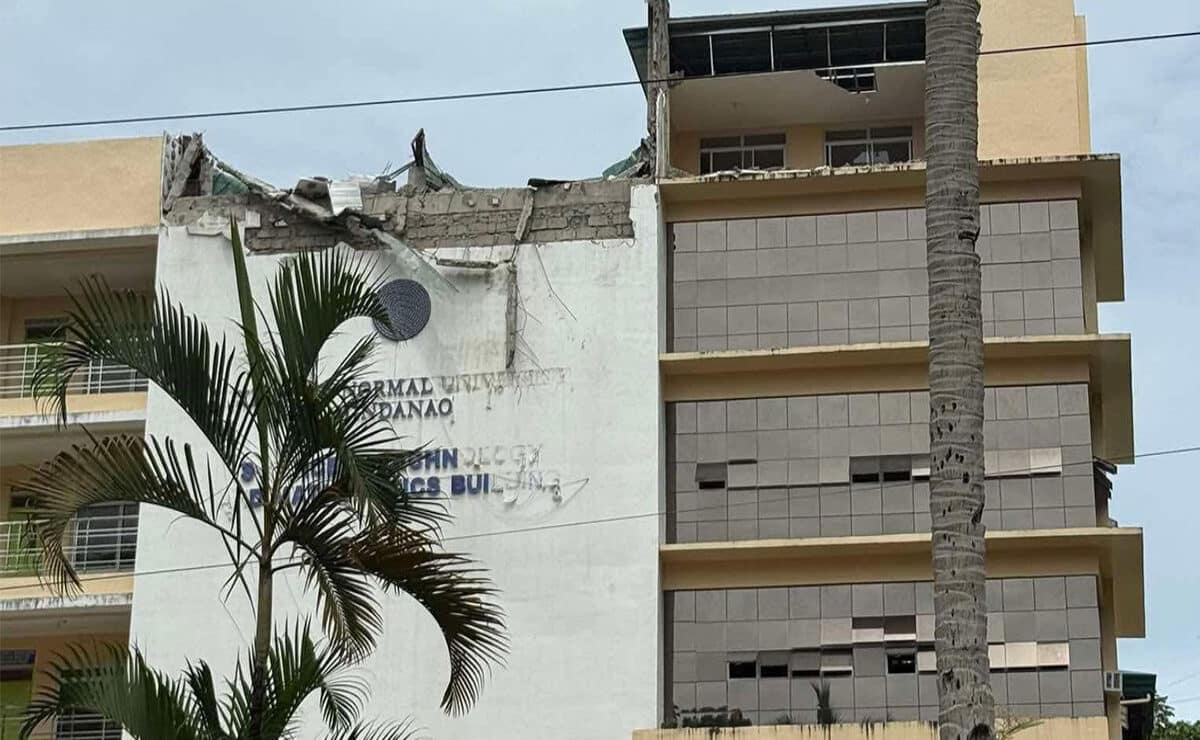
President Ferdinand “Bongbong” Marcos Jr. ordered all concerned agencies to mobilize relief and rescue operations. The Armed Forces of the Philippines, the Department of Social Welfare and Development, and the Bureau of Fire Protection were dispatched to assist local authorities in clearing debris, delivering aid, and providing medical assistance to affected residents. Several municipalities, including Manay and Pantukan, declared states of calamity to allow the rapid release of emergency funds and resources. Mining operations in Davao de Oro were suspended as a safety precaution amid fears of further aftershock-induced collapses. Emergency shelters were set up in schools and gymnasiums, where volunteers distributed food, water, blankets, and hygiene kits to displaced families.
Experts have linked the tremors to tectonic movement along the Philippine Trench, one of the most active subduction zones in the world, located just off the country’s eastern coast. This deep-sea fault line has produced several major earthquakes in the past century. Seismologists noted that the Davao twin quakes occurred less than two weeks after a magnitude 6.9 earthquake in Cebu that killed more than 70 people and injured hundreds. The back-to-back seismic events have renewed fears over the country’s preparedness for major earthquakes, especially in densely populated urban centers.
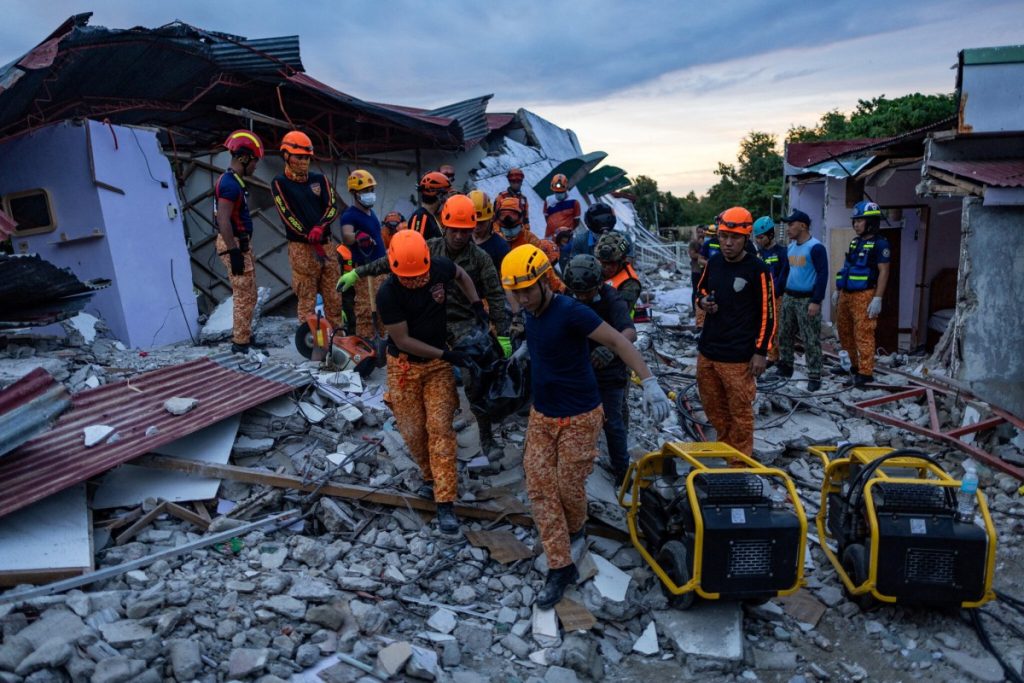
As rescue and relief efforts continue, authorities are urging the public to remain cautious, avoid re-entering damaged structures, and stay alert for aftershocks. Phivolcs has also advised local governments to continue monitoring landslide-prone areas, especially as rains are expected over the weekend. While the worst may be over for now, the Davao region faces a long road to recovery as residents rebuild their homes, restore essential services, and come to terms with the devastation left by the most powerful quake to strike Mindanao in recent years.
